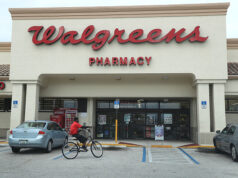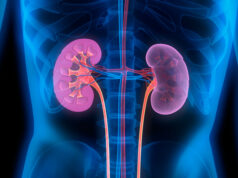Covid-19 has made us take a hard look at the readiness of the healthcare delivery system in our country. It has awakened us to the reality that it is unsuited to mitigate a health crisis affecting the general population. The inability to obtain real-time accurate data about what was going on during the crisis ultimately hindered pandemic management efforts. As health systems plan for the future, they need a new approach that allows them to innovate and rapidly adapt to changing situations. What they need is to harness the power of real-time insights.
According to Gartner, real-time insights can be achieved through a new kind of technology called Real-Time Health Systems (RTHS) that acquires, accrues, analyzes and translates operational intelligence into enterprise action. An essential part of RTHS is its central hub which allows all pertinent information to freely flow into it where it then can be appropriately shared within and across organizational boundaries to provide stakeholders what they need for optimum situation management.
What is situation management and why it matters?
Situational management provides an understanding of how an event is evolving by analyzing data from multiple sources, determining what is relevant, and then acting on it accordingly. In a public health emergency like the pandemic, it is the ability to collect real-time accurate information, analyze it, project what will come next, and take appropriate action.
The reality for too many healthcare systems is that real-time situation awareness doesn’t exist. A recent Wall Street Journal article, Why Hospitals Can’t Handle Covid Surges: They’re Flying Blind illustrates the problem by describing a medical center that had nowhere to send the critically ill when it was overrun with Covid-19 patients. While doctors and nurses sent text messages and made phone calls, blindly searching for openings at other hospitals, unfortunately, people died while awaiting care.
During a pandemic or any other public health emergency, hospitals and local, state, and federal agencies rely on a range of real-time metrics to respond quickly. They need to know how many beds are available at each facility, whether hospitals need more medical personnel, and the availability of critical supplies like medicine and ventilators. With this understanding, patients can get transferred more quickly and medicine can be distributed to those in greatest need.
The reason that many hospitals are “flying blind” is because they don’t have access to the vital information and communications capabilities necessary to understand the big picture. In most cases, incident preparation and response are not connected and therefore organizations cannot collaborate effectively with other hospitals, public safety, and other public agencies. As a result, responders resort to ad hoc processes via phone calls, texts and email. Connecting all stakeholders at the hub of an integrated RTHS doesn’t mean that hospitals wouldn’t still be overrun or have limited availability during an emergency, but it does mean that beds, transfers, and supplies could be identified faster and therefore improve response time and outcomes, especially when every second counts.
Lack of Insight
The elusive part of making situation management work is having access to information. To facilitate intelligent decision-making, real-time information from multiple sources needs to be available. Yet at many healthcare institutions, departments cannot communicate with each other or with external stakeholders effectively, leading to delays in decision making, patient care and reporting. RTHS share insights and achieve shared situational awareness across organizational boundaries. This real-time shared insight fosters better decision making, improved care outcomes, and optimal allocation of resources.
Covid-19 reporting mandates magnify the issue
In addition to the interdepartmental/hospital disconnect, there is an even bigger disconnect with US federal, state, and local agencies. Hospitals are mandated by the federal government to report the real-time metrics of vital information such as the number of Covid patients in the ICU, supplies of remdesivir, availability of supplies such as ventilators, masks, and gloves.
Currently, nearly all data is collected manually via fax, email, or web submission because many of the systems cannot communicate with each other. A recent study in JAMIA, Barriers to hospital electronic public health reporting and implications for the Covid-19 pandemic illustrates this point. The study finds that one of the most common problems to accurate and timely reporting is the inability of local, state, and public health agencies to actually receive the data that hospitals are mandated to send. The point is real-time accurate data is not being reported well and hospitals are frustrated by the lack of coordination between the federal and state agencies. While they are doing their best to comply with reporting requirements, hospital personnel end up entering data in multiple platforms, adding more administrative burdens at a very critical time.
Surge Heightens Need for Real-Time Situation Management
While the world awaits a vaccine, Covid-19 has now escalated to never seen before levels. As hospitals across the US brace for the next surge in coronavirus along with seasonal influenza patients this fall and winter, what can be done for the long term?
The key lies in hospitals being nimble so that they can respond and adapt to unforeseen situations, including but not limited to the coronavirus. Our healthcare system needs improved access to real-time data and collaboration across clinical, operational, and business domains, all of which can happen in an RTHS. This new model of operating will allow hospitals to have the critical information they require to manage the number of beds, staff, PPE even when demand changes overnight, as it did in March. When all key health stakeholders are connected at the hub, common insights can be leveraged, allowing all healthcare providers to respond intelligently, without delay and ultimately make the best decisions possible for their patients. This new approach can ultimately help healthcare organizations provide the best outcomes for all during the Covid?19 pandemic and beyond.







